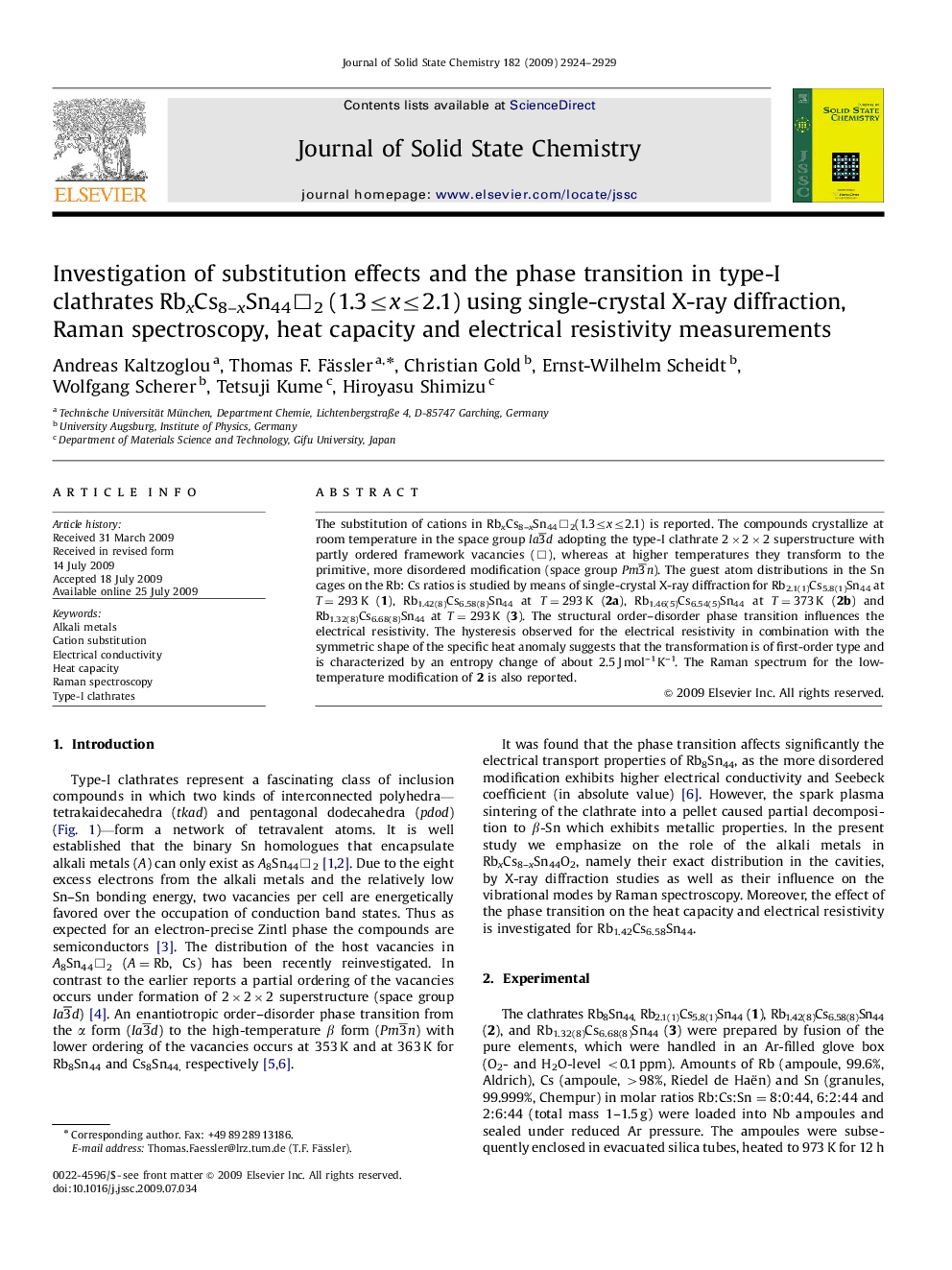| Article ID | Journal | Published Year | Pages | File Type |
|---|---|---|---|---|
| 1330984 | Journal of Solid State Chemistry | 2009 | 6 Pages |
The substitution of cations in RbxCs8–xSn44□2(1.3≤x ≤2.1) is reported. The compounds crystallize at room temperature in the space group la3¯d adopting the type-I clathrate 2×2×2 superstructure with partly ordered framework vacancies (□), whereas at higher temperatures they transform to the primitive, more disordered modification (space group Pm3¯n). The guest atom distributions in the Sn cages on the Rb: Cs ratios is studied by means of single-crystal X-ray diffraction for Rb2.1(1)Cs5.8(1)Sn44 at T=293 K (1), Rb1.42(8)Cs6.58(8)Sn44 at T=293 K (2a), Rb1.46(5)Cs6.54(5)Sn44 at T=373 K (2b) and Rb1.32(8)Cs6.68(8)Sn44 at T=293 K (3). The structural order–disorder phase transition influences the electrical resistivity. The hysteresis observed for the electrical resistivity in combination with the symmetric shape of the specific heat anomaly suggests that the transformation is of first-order type and is characterized by an entropy change of about 2.5 J mol–1 K–1. The Raman spectrum for the low-temperature modification of 2 is also reported.
Grapical AbstractThe effects of substitution of cations in the type-I clathrates RbxCs8–xSn44 (1.3≤x≤2.1) are reported. The distribution of the guests in the Sn cages under different reaction stoichiometries and annealing times is studied by X-ray diffraction. A structural phase transition in Rb1.4Cs6.6Sn44 at 333–363 K affects significantly the electrical resistivity and heat capacity.Figure optionsDownload full-size imageDownload as PowerPoint slide
